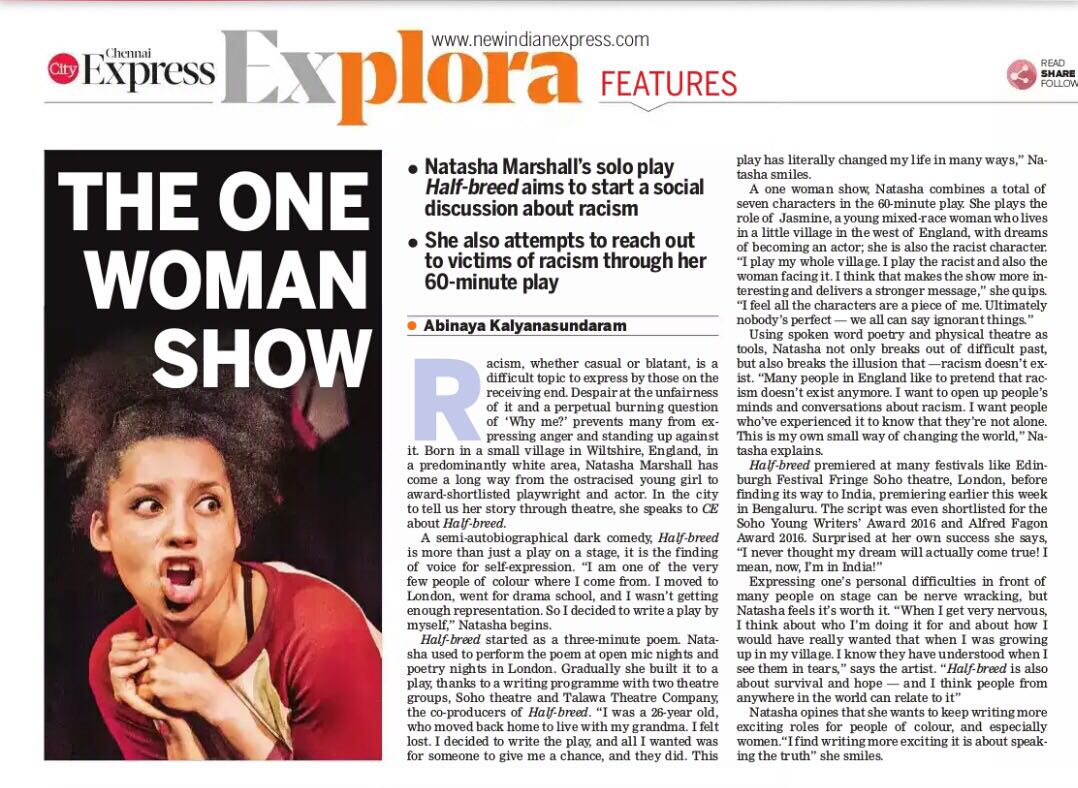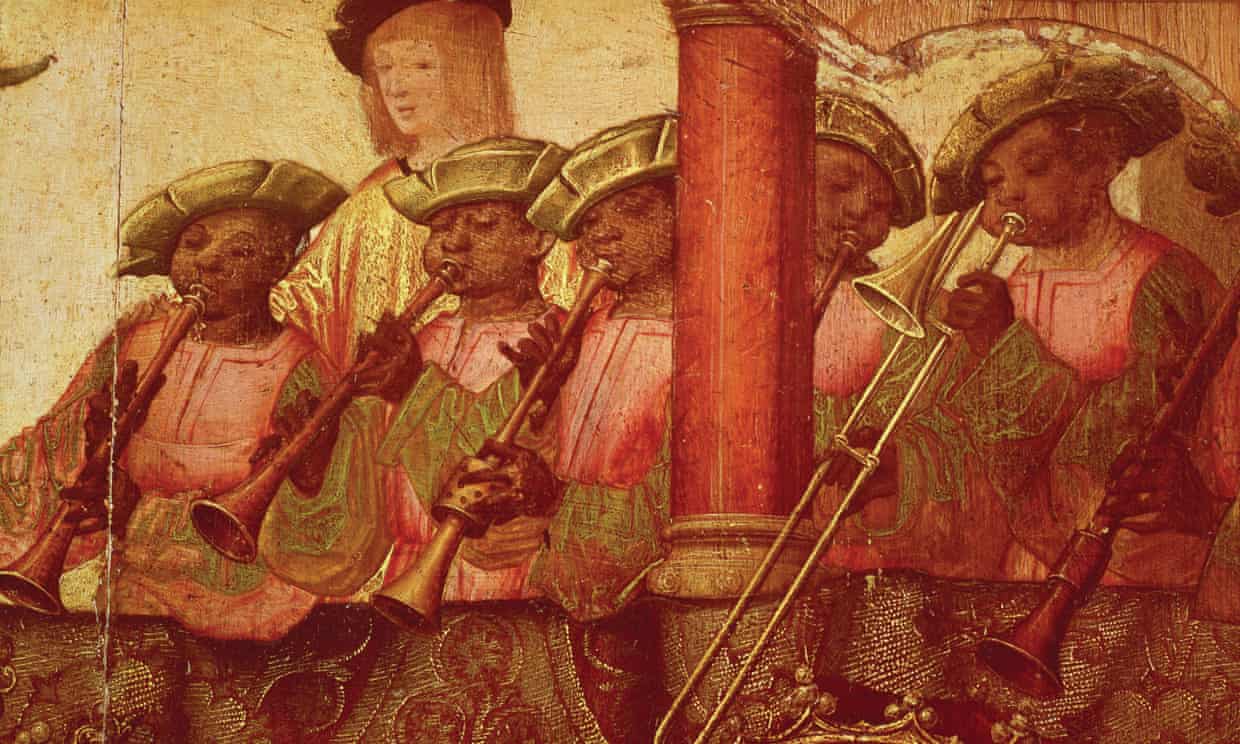The one woman showPosted in Articles, Arts, Autobiography, Identity Development/Psychology, Media Archive, Social Justice, United Kingdom on 2017-11-07 04:55Z by Steven |
The New Indian Express
Chennai, Tamil Nadu, India
2017-10-14
Ablnaya Kalyanasundaram, Chennai Express
- Natasha Marshall’s solo play Half-breed aims to start a social discussion about racism
- She also attempts to reach out to victims of racism through her 60-minute play
Chennai: Racism, whether casual or blatant, is a difficult topic to express by those on the receiving end. Despair at the unfairness of it and a perpetual burning question of ‘Why me?’ prevents many from expressing anger and standing up against it. Born in a small village in Wiltshire, England, in a predominantly white area, Natasha Marshall has come a long way from the ostracised young girl to award-shortlisted playwright and actor. In the city to tell us her story through theatre, she speaks to CE about Half-breed.
Half-breed started as a three-minute poem. Natasha used to perform the poem at open mic nights and poetry nights in London. Gradually she built it to a play, thanks to a writing programme with two theatre groups, Soho theatre and Talawa Theatre Company, the co-producers of Half-breed. “I was a 26-year old, who moved back home to live with my grandma. I felt lost. I decided to write the play, and all I wanted was for someone to give me a chance, and they did. This play has literally changed my life in many ways,” Natasha smiles.
A one woman show, Natasha combines a total of seven characters in the 60-minute play. She plays the role of Jasmine, a young mixed-race woman who lives in a little village in the west of England, with dreams of becoming an actor; she is also the racist character. “I play my whole village. I play the racist and also the woman facing it. I think that makes the show more interesting and delivers a stronger message,” she quips. “I feel all the characters are a piece of me. Ultimately nobody’s perfect — we all can say ignorant things.”…
Read the entire article here.







